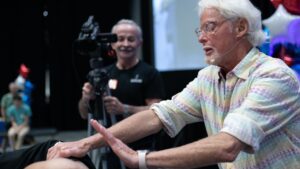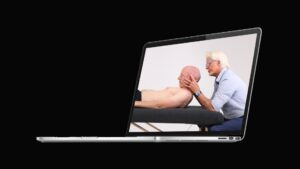Recently, I was asked if I’d ever written about femoral anteversion in children under age 6. I write about this condition in adults but the etiology may be different with children. This developmental abnormality (internal femoral rotation) usually suggests that the problem developed with the affected limb(s) while in the fetus. While the exact mechanism isn’t known, many blame it on genetic factors. I blame much of it on Mom, i.e., too much sitting, prolonged standing, etc. doesn’t allow the fetus to position itself into a left fetal lie properly. Many sunny-side-up babies are born with femoral anteversion. I believe this condition is often mis-diagnosed. Here’s a developmental control scenario that can disguise itself as a genetic problem. For whatever reason (late crawling, rolling over improperly, etc.) the child has inadequate abdominal control during 16 to 20 weeks of age. This limits weight shifting and reaching causing G-max to become inhibited the hip flexors not to lengthen. In an effort to gain stability, the hips externally rotate in prone and the TFL tightens. As the child finally stands, the scaps retract to compensate for poor rectus abdominus control and a de-stabilized trunk. Because G-max motor control was inhibited, the legs internally rotate causing the hips to sag into flexion creating the illusion of femoral anteversion. From an impairment level approach, I’d suggest looking for an etiology, and it’s usually the recuts abdominus and G-max. Work with a good child orthopedist if possible.









